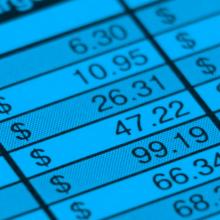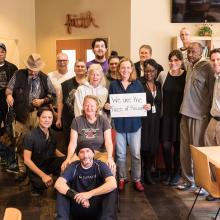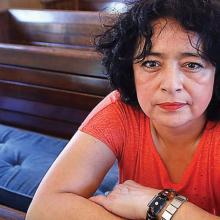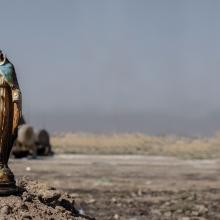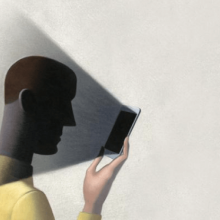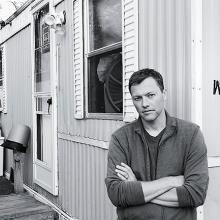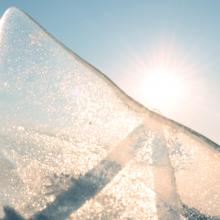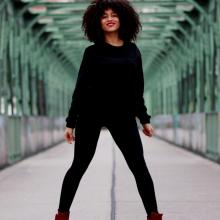Feature
JoAnn Flett decided at a young age that she loved both spreadsheets and Jesus. After more than 20 years of senior accounting and management experience, she now directs the masters in business administration program at Eastern University, a theologically informed curriculum with a strong sense of social justice that equips students with business acumen to serve God and society through business. She sat with Sojourners senior associate editor Julie Polter in June to tell her story.—The Editors
When we think of the church and business, we tend to think of them at opposite ends of a spectrum. We often think of businesspeople as a certain kind of person, one that doesn’t conjure up the best images of humanity.
I was privileged, early on, to have friends who were very successful business leaders. What drew me to them was that they were people whose faith mattered to them; they led their organizations without making a big fanfare about this, but they were leading from a faith perspective.
I admired that they ran successful companies that transformed their employees, their business partners, and their local communities. But nobody seemed to celebrate them in their local churches. It’s easy to think of teachers and nurses, people in the “helping professions,” as doing God’s work. Yet there are people of faith who lead powerful and influential organizations. These people go to work and make critical decisions, and their faith has all kinds of implications about how they live in the world, but their work is not being affirmed on Sunday.
When Kathy Killian Noe arrived in Seattle in 1999, she already had a lifetime of experience as a passionate advocate for the forgotten and the despised. She studied her new city with a simple question in mind: Where was the deepest need? She saw thousands of people struggling with mental illness and substance use disorders. She dreamed of finding a way to offer something those people were missing—something that might be called the advantages of family.
For lucky people, family means a reliable network of human beings who will never abandon you, who are always ready to give you the benefit of the doubt, whose love is reliable as rain. Family is the solace of being known and cherished. It’s having someone call you to check in, or bake you a cake, or just be happy to see you. It’s having people who need you. Some of us are born into families like this, and some of us find them in loving faith communities that create families of choice.
Noe faced a whole population suffering from the lack of that kind of support—people who often didn’t even know what it feels like to be cared for over the long haul in a thousand small but crucial ways. “Nine out of 10 Recovery Café members have experienced childhood trauma,” Noe said, “and many have suffered one trauma after another.” That these people also suffered from a variety of addictions and other mental health challenges only made their isolation more heartbreaking.
The most important ingredient in any meal is love. If one chooses the food, prepares the food, and presents the food with love, there will always be spiritual nourishment baked in along with the calories and flavors. And so, with the support of a small group of friends and New Creation Community—an ecumenical faith community in the tradition of Washington, D.C.’s Church of the Saviour—Noe set out to find a way to fill the need for that kind of nourishment. The result was Recovery Café.
A resurgence of Indigenous identity and activism invites repentance and response from the descendants of European settlers--including Christians.
WHEN I FIRST SPOKE with Rosa Sabido, she had been in sanctuary at Mancos United Methodist Church in Colorado for 75 days. She sleeps in a makeshift room in what used to be the church’s nursery, the head of her bed resting against a small mural of Noah’s Ark. Members of the church donated a bed, a dresser, and a computer with internet access and also installed a shower in the room itself.
Most days she has visitors, including members of the church and her parents, who take turns sleeping in a nearby office during the night and keep Sabido company during the day. She bakes when she feels inspired and sometimes joins church members in practicing yoga. But Sabido is clear: Sanctuary isn’t glamorous.
“The hardest thing is having to depend on someone,” said Sabido. “I have always been self-sufficient, always working to fulfill my needs and my parents’ needs.”
Sabido was raised in Mexico City but fled to the U.S. in 1987 due to the city’s increasing violence; she was 23. For the past 30 years, Sabido has lived in Cortez, Colo., a small town where her mother is a legal resident and her stepfather is a naturalized citizen. Sabido worked as a secretary at a nearby church and prepared taxes at H&R Block, using her salary to support her parents.
But since Sabido didn’t have documents that would allow her to stay in the U.S. permanently, she used visitor visas to travel between Mexico and the U.S. In 1998, she was stopped at the airport and deported back to Mexico City.
MY WIFE AND I left London for Africa in 1952 to serve as “agricultural missionaries” through the Anglican Church Missionary Society. For 65 years we have been living and working with farming families who live off less than five acres of land. In fact, 85 percent of the world’s farms are less than five acres.
The International Fund for Agricultural Development estimates that there are some 500 million small farms worldwide, and more than 2 billion people depending largely on agriculture for their livelihoods. Smallholder farmers produce 80 percent of the food consumed in Asia and sub-Saharan Africa.
DOZENS OF CHURCHGOERS are dressed in their Sunday best outside St. John’s Church in Qaraqosh, Iraq. Before entering, each person is individually searched. First, they are patted down for suicide vests. Then their bags are inspected for weapons.
It is Easter—the first to be celebrated in this church since Islamic State (ISIS) militants were driven out of Qaraqosh, formerly Iraq’s largest Christian-majority city, by Iraqi forces after nearly three years of conflict.
Everyone is cautious. A week earlier, ISIS suicide bombers killed more than 40 people, including themselves, at two churches in northern Egypt during Palm Sunday services.

San Pietro liberato dal carcere, via Wikimedia Commons
IN THE SECOND century, Jesus’ followers were not a reputable bunch. Most people had probably never heard of Christians, but some knew the rumors: They worshipped a crucified criminal, ate flesh and blood, and obstinately refused to sacrifice to the gods. And they were notorious for hanging around prisons.
This is partly because many early Christians ended up in prison themselves. Jesus did. Peter did. Paul did. Ignatius of Antioch did.
But Christians were also known for showing up at prisons voluntarily. In one of the earliest surviving references to the Christian movement by an outsider, the second-century writer Lucian, who thought followers of Christ were laughably ignorant and naive, mocks them for the support they gave an imprisoned Christian leader named Peregrinus. Lucian describes widows and orphans loitering around the prison while their leaders bribe the jailers to get inside, bringing Peregrinus food and encouraging him with the scriptures. “It’s incredible how quickly they respond in such situations,” he remarks. “They get to work immediately, and spare nothing.”
IF THERE IS ONE CONFESSION a journalist never wants to make, it’s that she can’t handle the truth. Many of us got into the business for the express purpose of truth-telling, and for journalists growing up in the post-9/11 dawn of the 24-hour news cycle and the war in Iraq, the challenge to tell it boldly and well is our guiding star.
The nights are awfully cloudy these days.
When Syrian refugee children washed ashore in Libya in 2015, the images were indelible in their lonely, awful stillness—our decade’s “vulture and the little girl,” our “Falling Man.” Editorial rooms around the country debated whether splashing images of drowned babies across our platforms was truly in the public interest. Can pressing on exposed nerves yield anything but a howl?
Many outlets—including Sojourners—decided against publishing the photos. Everyone saw them on social media anyway.
MOST CHRISTIANS KNOW about Gaza from its mention in the Hebrew scriptures in the sensuous and heroic stories of Samson, corrupted by Delilah, who lured him into showing the secret of his strength (Judges 16:5). Historically a Canaanite city and then Philistine, Gaza was conquered by Joshua as a part of his conquest of the Promised Land (Joshua 10:41). For thousands of years Gaza has had a history of being destroyed and rebuilt, from the time of Alexander the Great until today.
The Gaza Strip is now a small territory to the southwest of Israel, bordered on the west by the Mediterranean Sea, with 1.8 million people living in only 140 square miles. During my visit there earlier this year, I was overwhelmed by the place’s incredible beauty; at the same time, the lack of functional sewage treatment plants, limited electricity, and other broken infrastructure result in Gazans experiencing a severe humanitarian crisis. Beautiful and tragic.
In 1967, the Israeli military seized Gaza and remained there until 2005, when Israel unilaterally pulled out under Ariel Sharon’s “disengagement” plan. Between August and September 2005, roughly 9,000 Israeli settlers were evacuated and 21 settlements destroyed (rather than turned over to Gazans). In 2007, after Hamas took control of Gaza, Israel intensified the restriction of movement and imposed land, sea, and air blockades on the territory. The blockades have led to severe living conditions for the people there and a growing humanitarian crisis.
Lancaster, Pa., isn’t exactly a big city, but with a population of about 60,000, it’s also not the sort of place where you’d expect to bump into people you know at every intersection. Neither would you expect those people to be from Somalia, the Democratic Republic of the Congo, Cuba, Ukraine, or Syria.
But if you’re Christine Baer, congregational resource developer for Church World Service, such encounters are all in a day’s work, and they usually result in an invitation to someone’s home for dinner.
CWS is the relief, development, and refugee assistance arm of the National Council of the Churches of Christ. It relies on volunteers in the community to help newly arrived refugees restart their lives in the United States.
Congregations make up the family welcome teams, a vital part of the resettlement process. But about 10 years ago, congregational co-sponsorship of refugees resettled in the Lancaster area began to decline, and as recently as three years ago, only five congregations were sponsoring families. Baer attributes the drop to a difference in the way people practice church and community today and to people’s lives being busier and faster, with less time to commit to volunteer work.
"I can’t fathom trying to do this without my faith.” For M Barclay, currently on the path to ordination, faith has never been the problem. For Barclay, the biggest barrier to Christian life hasn’t been belief, science, secular culture, or even their own gender identity. The stumbling block, at every point, has been the church.
Like many transgender Christians, Barclay has been told that their gender identity is sinful, that their faith is not valid, and that they should not be called to ministry or involved in Christian life unless they “repent.” (Barclay, who does not identify as strictly male or female and uses the pronouns “they” and “them” for self-reference, has intentionally chosen their name, M, for its gender neutrality.)
Whether we know it or not, transgender people are already a part of our church communities. As of 2016, at least 1.4 million adults in the U.S. identify as transgender, and 66 percent of trans people have been a part of a faith community at some point in their life. Unfortunately, 1 in 5 trans people of faith reported leaving their faith community due to rejection.
Still, some trans Christians find the strength to stay.
It’s awkward to become famous for writing about poverty. Just ask Harvard sociologist Matthew Desmond, whose book Evicted: Poverty and Profit in the American City won the 2017 Pulitzer Prize for nonfiction. For his research, Desmond spent more than a year living in trailer parks and inner-city rooming houses to document the housing struggles of eight Milwaukee families—struggles that Desmond could not forget.
“I couldn’t help but translate a bottle of wine placed in front of me at a university function or my monthly daycare bill into rent payments or bail money back in Milwaukee,” writes Desmond in Evicted. “It leaves an impression, this kind of work. Now imagine it’s your life.”
Desmond used the proceeds from Evicted to create two foundations: Just Shelter, which highlights organizations preserving affordable housing, and another to directly assist the families he writes about in the book. But Desmond doesn’t want to be lionized; he wants to reframe the conversation about poverty in America.
“When we talk about the poor, it’s almost as if we talk about them as isolated from the rest of us, as if their lives aren’t connected to ours—but they absolutely are,” Desmond told Sojourners associate editor Betsy Shirley. As he sees it, that means we all need to consider “how we receive some benefit that others don’t—and ask hard questions about the fairness of that.”
I remember the first day of my housing-policy class in graduate school. I was late. I had just left the Minneapolis Public Housing Authority where I was helping a family activate the housing-choice voucher they had recently been granted.
I found a seat near the door in the back of the classroom. After welcoming us, the professor opened with what seemed like a simple request: “Raise your hand if you have ever lived in subsidized housing.” In a class of about 40 students, only three or four hands went up. I kept mine down.
He followed with a second question: “How many of you have lived in a house either you or your parents owned?” I raised my hand—along with a majority of my classmates. “Congratulations,” he responded. “You too have lived in subsidized housing.”
He used the rest of class to describe the two major types of housing assistance offered by the U.S. government.
The first type is public housing and housing-choice vouchers that limit what a household pays for rent to 30 percent of their income. This is what most of us think of when we hear the phrase “subsidized housing.” The Department of Housing and Urban Development runs these programs, which are meant to benefit mainly households that earn 30 percent or less of median income for an area. This might be $12,750 for a family of four in Mississippi or $27,600 in California. Congress allots about $38 billion per year for these programs.
The second form of government-funded financial assistance for housing is the mortgage-interest tax deduction, which allows homeowners who itemize deductions to deduct the interest they pay on their home loans. The deduction can be applied to both primary and second residences, including boats with bathrooms. Most households that benefit from the mortgage-interest tax deduction earn between $100,000 and $500,000 a year. This, the largest housing subsidy program in the country, costs the federal government upward of $100 billion a year.
More than 97 percent of climate scientists agree that human-caused climate change is happening here and now. Yet many Americans are unaware of this scientific consensus.
Meanwhile, evidence of climate change is mounting—rising seas, retreating glaciers, and extreme weather—as are their effects on human health and well-being, everything from more lung disease and vector-borne illnesses to injuries and deaths from extreme weather events.
In the face of these sobering realities, the Trump administration is taking steps to reverse progress the U.S. has made on carbon pollution by eliminating the Clean Power Plan, radically shrinking the Environmental Protection Agency, reversing environmental safety regulations, and potentially withdrawing from the Paris climate agreement.
However, we are not helpless, and the situation is not hopeless. In many ways, the prospects for progress in combating climate change are good. The costs of clean, renewable energy, such as solar and wind, are dropping precipitously, and a large majority of Americans want us to transition quickly away from fossil fuels, regulate carbon emissions, and abide by the climate agreement reached in Paris last year. National environmental organizations are seeing rapid increases in donations and volunteerism from those who oppose federal efforts to dismantle environmental protections. But it’s not enough.
Building a strong national movement to protect the climate requires many voices. The voices of Christians are especially needed. And many are speaking up. “The poor, the disenfranchised, those already living on the edge, and those who contributed least to this problem are also those at greatest risk to be harmed by it. That’s not a scientific issue; that’s a moral issue,” wrote Katharine Hayhoe, a renowned climate scientist and evangelical Christian, on The Conversation website. She has noted that, “As scientists we don’t know a lot about suffering, but as Christians we do. And we know that part of the reason we’re here in this world is to help people who are suffering.” Pope Francis has made the case that climate change is one of the principal challenges facing humanity and that it is a moral imperative for Christians to rise to the challenge.
ON DEC. 10, 2015, shortly after then-candidate Donald Trump suggested a “total and complete shutdown” of Muslim immigration, Wheaton College professor Larycia Hawkins wrapped a hijab around her head, snapped a selfie, and posted the photo on Facebook. “I stand in religious solidarity with Muslims because they, like me, a Christian, are people of the book,” wrote Hawkins in the post. “And as Pope Francis stated last week, we worship the same God.”
It was a costly act for Hawkins: Three months later, following a controversy about whether she had violated the evangelical school’s statement of faith, she was no longer a tenured professor at Wheaton. But Hawkins doesn’t regret what she did. As she sees it, true solidarity—she calls it “embodied solidarity”—always comes with a cost.
When it comes to bodies and the church, Christians often start with St. Augustine. Though the esteemed fourth century bishop of Hippo spent a full decade debunking the dualistic heresy that material bodies were evil, he remained famously skittish about fleshy influence on the soul. By Augustine’s reading of scripture, bodies weren’t inherently wicked, but they sure were weak—especially female bodies—and you had to watch ’em or God-only-knows what kind of sinful depravity might creep in. He often quoted the Book of Wisdom: “the corruptible body weighs down the soul and the earthly tabernacle presses down the mind that muses upon many things.” And you don’t have to be a church-history expert to trace the devastating legitimacy Augustine’s ideas gave to misogyny and other forms of body-based oppression in Christianity.
Yet as Christians in every generation have countered, we can’t write bodies off so easily. After all, smack dab in the middle of our confession of faith is a savior who suffered bodily, was crucified, and rose again. What’s more, this same savior was known for saying that love is laying down your life, and how we treat others is ultimately how we treat God. “‘Suffering with’ requires our entire bodies,” Hawkins later explained. “Suffering from a distance is not solidarity. Theoretical solidarity is not solidarity at all.”
Sojourners asked six Christian writers and theologians: What does your body tell you about God? Not bodies in the abstract, but your body: pimples, dreadlocks, muscles, belly buttons, wrinkles, thighs, and all. And though it might sound like an exercise in navel- gazing sure to make Augustine roll over in his grave, the responses we received say a lot about the carne part of incarnation: the radical solidarity of a God who took on flesh. - The Editors
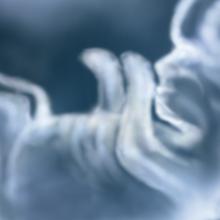
Alex Mit / Shutterstock
There is no legislative solution to the problem of abortion. There is no president who can end abortion. There is no Supreme Court justice who will solve abortion.
This is not just because we Americans, including we American Christians, have been shouting at each other about abortion for more than 40 years, with no end in sight. It is not just because the conflicting beliefs that people have about abortion are unlikely to change. It is not just because our polarized interest groups and political parties now gain support off of abortion. It is not just because the two “sides” on abortion are roughly balanced and appear likely to remain so.
Abortion is the sad song that never ends. It never ends because at one level it is an intractable human problem, visible in all times and cultures. It goes like this: Fertile heterosexual males and females are needy, passionate, sexual creatures who are drawn to each other and often end up having sex. They do so for all kinds of reasons, some good, some just okay, some terrible. When a fertile male and fertile female are “shooting with live bullets,” sometimes the woman will get pregnant. This is true sometimes when they are using birth control and certainly when they are not using birth control. The God-given power of mammalian reproduction is not easily denied.
Almost every known society has attempted to create systems of social control to limit sexual contact between fertile men and women, in large part because of the procreative power of the mature human body. These have been remarkably comprehensive social systems. They have involved religious, political, legal, moral, communal, and familial efforts to train attitudes, impose constraints, inflame fears, and so on. Always they have involved efforts to limit private contact between sexually mature men and women outside of the socially approved context for procreation—usually, marriage.

Andrey Bayda / Shutterstock
IN 2000, sophomore Onaje X.O. Woodbine was Yale basketball’s leading scorer and one of the top 10 players in the Ivy League. From the outside it must have seemed like a dream come true for a young man who grew up playing street ball in the Roxbury neighborhood of Boston.
But Woodbine felt isolated and excluded by the white players on the team, troubled by what he’s described as “a locker-room culture that encouraged misogyny,” and hungry to focus on his studies and wrestle with deeper philosophical and theological questions. So he quit basketball.
Woodbine eventually returned to the courts of his youth as a researcher, studying the practice and culture of street basketball for his doctoral studies in religion at Boston University. Woodbine is the author of Black Gods of the Asphalt: Religion, Hip-Hop, and Street Basketball (Columbia University Press) and a teacher of philosophy and religious studies at Phillips Academy in Andover, Mass. He spoke with Sojourners senior associate editor Julie Polter in May.
Julie Polter: What led you to study street basketball from a religion scholarship angle?
Onaje X.O. Woodbine: When I was 12 years old, I lost my coach. He was my father figure; I didn’t have my father for most of my early childhood. It was just devastating.
I went to the court the next day to look for him. I felt his presence in that space. It was really the only place, looking back, where I felt safe, I felt whole, where I felt like my inner life was valuable, where there was a whole community whose interest was in my growth as a human being.
Almost a decade ago, members of the faculty, administration, and student body at Hope College started a conversation about adding a program of peace studies at the Holland, Mich. campus. Last fall, the process reached an important milestone when the first “introduction to peace studies” course was offered to Hope’s 3,400 students, part of the school’s first ever peace and justice minor.
Administration officials talked about the difficulties in starting any new program at the college level. “First, you have to make a good argument as to why the program is needed at all,” said Alfredo Gonzales, Hope’s dean for international and multicultural education, who took part in those early discussions. “It’s difficult to introduce one more program at a liberal arts institute where there’s just an abundance of programs. In what ways are we going to add a program without adding another burden to our students?”
And that’s just the start of the process.
Once people at Hope decided that a peace and justice curriculum was indeed a good idea, Gonzales said they dove headfirst into logistical questions, such as whether Hope wanted to start with a full-fledged program or if they wanted to introduce it incrementally. Furthermore, they had to figure out which departments ought to be involved in creating such a multidisciplinary effort and what the academic requirements would be.
The process included many conversations among a lot of people, Gonzales told Sojourners, but he said he knew it would be worth it, and that a peace studies program was a natural fit for a school affiliated with the Reformed Church in America. “If we look at our mission statement, it says that Hope College is to educate students for lives of service and leadership in global society,” he said. “So in that framework, this program looks at questions of reconciliation in a world that is deeply torn and is injuring people from the very youngest to the very oldest in ways that we don’t even understand yet.”
Drawing on best practices
In a sense, peace studies is part of Hope College’s legacy: Iconic peace activist A.J. Muste graduated from Hope in 1905. The Dutch-American Muste would go on to be executive director of the Fellowship of Reconciliation—an interfaith peace organization—and to mentor Martin Luther King Jr. In the late ’50s, Muste protested New York City’s civil defense drills alongside Catholic Worker co-founder Dorothy Day, and in 1964, Muste participated in a retreat with a group of renowned peace activists, including Trappist monk Thomas Merton and Jesuit priest Daniel Berrigan.
As an academic field, irenology—the study of peace—is thought to have its formal genesis in mid-20th century Europe with the advent of peace research institutes. In the United States, the first institutions to teach peace were colleges and universities with ties to the historic peace churches: the Mennonites, the Quakers, and the Church of the Brethren.

lastbackup / Shutterstock
A COUPLE OF YEARS AGO, while doing research on social privilege for an introductory ministry course, I came across an article titled “White Fragility.” Even a skim of the first few pages was enough to pique my excitement. In it, author Robin DiAngelo—an expert in multicultural education—describes in sociological detail a common set of defensive and destructive responses that people have when facing the reality of their own privilege.
I recognized each response she described from those my students had whenever I asked them simply to face—let alone begin to dismantle—the various forms of social privilege they each embody. Where, I began to wonder, could I squeeze this article into an already over-packed course syllabus? How could it best help us navigate the difficult issues we were trying to engage?
Emptying ourselves
Social privilege is a daunting topic to engage. When teaching it, I draw heavily on Peggy McIntosh’s now famous definition of its racial manifestation:
I have come to see white privilege as an invisible package of unearned assets that I can count on cashing in each day, but about which I was ‘meant’ to remain oblivious. White privilege is like an invisible weightless knapsack of special provisions, assurances, tools, maps, guides, codebooks, passports, visas, clothes, compass, emergency gear, and blank checks.
What McIntosh helps us see is that social patterns of privilege are maintained because people carry them about and use them while, at the same time, people are able to carry about and use their privilege because those social patterns are maintained. The effect is cyclical, and it happens without any of us being particularly aware of our own complicity in the system.
Society confers unearned gifts on people who embody particular privileged traits—straight, white, able-bodied, middle-class men, for example—while neglecting to confer them on others. This isn’t to say that people who embody more privilege are explicitly homophobic, racist, ableist, classist, or sexist. It doesn’t mean they don’t work hard for the goods they accumulate in life—of course, many do. It’s just that it feels perfectly natural to walk through an open door without ever noticing how it swings shut in the face of the equally hardworking genderqueer Latinx whose wheelchair wouldn’t even fit.

lzf / Shutterstock
I arise in the morning torn between a desire to improve the world and a desire to enjoy the world. This makes it hard to plan the day. — E.B. White
ON A GORGEOUS FALL DAY, I bundle up just a bit and go sit on the rock under the apple tree in the middle of the field. The low-angled sun pours its subdued warmth onto the splashy orange of the maples, transient yellows of the tamarack, and faithfully green cedar. Further to the west, the mountains cut a postcard-perfect silhouette against the seasonally pale blue sky.
Such grace, warming my heart with joy.
A loving God calls us to experience such profligate joy. Now, in the latter decades of my life, time picks up its pace at an alarming rate. So I often promise myself to seek more opportunities to sit on rocks.
But instead, each morning, the genes of my activist mother, the teachings of my faith, and probably a bit too much of my own hubris conspire to bring on the conflicting desire to “improve” (well, okay ... save) the world.
So I strongly identify with E.B. White’s dilemma, softened by his gentle humor-with-a-touch-of-wistfulness.
Working for social justice seems like forever. I am weary of being tedious to those around me who do not understand my seemingly quixotic campaigns. I am weary listening to the current loud, vicious, largely irrelevant public clamor surrounding issues to which I am dedicated. I am weary knowing that those of us preaching minority positions that were once slammed as unrealistic have been proven right. But it took so long: civil rights, the Vietnam War, apartheid, climate change. As we slogged through our protests and The Powers That Be didn’t listen, lives were lost, billions of dollars spent, time wasted. I am impatient: Why can’t the arc of the moral universe run, rather than just bend, toward justice?
